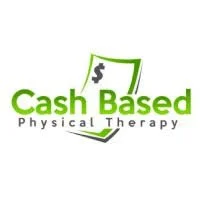Navigating the Treatment Maze: Choosing Between Insurance and Cash for Your Physical Therapy Journey
Introduction:
In recent years, cash-pay physical therapy has emerged as a response to the limitations of insurance-based models. This trend reflects a desire for greater autonomy in healthcare choices, allowing patients to prioritize quality care without traditional insurance constraints. Consequently, the decision between insurance-backed physical therapy and cash-pay physical therapy is evolving into a complex choice, presenting individuals with the challenge of navigating the financial landscape of rehabilitation.
Our goal in this blog is to shed light on the pros and cons of both options, empowering you to make an informed decision that not only promotes recovery but also aligns seamlessly with what meets your individual needs. In a world where health is wealth, understanding the dynamics of insurance versus cash-pay physical therapy becomes an essential compass for those on a path to healing.
Traditional insurance-Based PT Model:
In the traditional insurance-based physical therapy model, clinics undergo a process called “Credentialing,” where the healthcare institution is vetted by the insurance company to ensure it meets specific requirements. Once approved, the clinic enters into an agreement with the insurance company, establishing reimbursement rates for different types of services.
To illustrate, consider a spa offering a deep tissue massage for $100/hr and a sports massage for $125/hr. Similarly, insurance-backed settings have reimbursements rates for manual therapy $40/hr, neuromuscular re-education $45/hr, and therapeutic activities $50/hr, and so forth.
Why does this matter? The varying reimbursement rates in the insurance-based clinics create an invisible hand that shapes your treatments, often favoring higher reimbursement services and more billed units. However, these may not necessarily be the most beneficial types of treatment for your unique needs.
Pros:
Cost Coverage: Insurance can alleviate a portion of therapy expenses; reducing financial burden.
However, the effectiveness of deductibles and co-pays depends on the specifics of your insurance package.
Wide network of providers: Insurance provides access to a broad network of healthcare providers and facilities.
o With growing number of PPO vs HMO type insurances, this enables a wider selection of providers. PPO allows for a fraction of reimbursement with out-of-network services.
Cons:
Authorization: Insurance often requires pre-authorization beforehand.
o Requiring authorization for start of care, and re-authorization for additional appointments can delay rehab time, particularly for time-sensitive conditions.
Accommodation: Restricted to treat referred body region; limiting the ability to address other affected areas.
o Insurance typically does not cover the treatment of multiple body regions at one time.
Financial unpredictability: May involve hidden fees or non-reimbursement options.
o High deductibles may necessitate out-of-pocket payments, and co-pays could still apply introducing potential financial uncertainties.
Cash-Pay Physical Therapy:
In the healthcare industry, which is often dominated by insurance constraints, cash-pay physical therapy offers a competitive alternative. While this cash-pay physical therapy has quietly existed for quite some time, only in the past decade has cash-pay models begun to gain traction and popularity. This is the result of decrease insurance reimbursement for physical therapy business owners and stricter treatment guidelines for patients.
Cash-pay physical therapy initially emerged to silence to racketing of voices that influence your health and well-being. The beauty of cash-pay models lies in the simplicity of cutting out the middleman, eliminating the excess noise and giving you and your clinician the freedom to craft a personalized plan of care that truly serves in your best interests. No invisible hand dictating the terms – just a straightforward, patient-centered approach. It’s healthcare with a personal touch, putting you back in control of your healing journey!
Pros:
No Delays in Care: Immediate start to therapy without waiting for insurance authorization.
o Bypassing the middleman expedites the start of recovery.
Flexibility: Treating the body as a whole, addressing separate issues along the rehab journey.
o Unrestricted by the requirement to focus solely on the referred body region, allowing for holistic approach.
Autonomy: Patient have the power to dictate own treatment
Cash pay extends beyond insurance standards, empowering patients to decide when they personally feel ready to be discharged and resume sports, recreational activities, or hobbies.
Cons:
Higher Upfront Cost: Initial full cost of appointment falls upon the client.
o However, PPO may reimburse a portion of the appointment cost after submitting a receipt.
More Responsibility: The responsibility of providing/sending pertinent medical information rests with the individual.
o Unlike insurance-based clinics, which are typically in-network and can transfer medical information associated clinics (referrals, MRI/X-rays, etc.), cash-pay settings require more proactive involvement in information transfer.
· Accountability: Most cash pay clinics do not see patients as frequently as in-network clinics to save patients money and due to longer treatment times.
o Progress may slow down unless the patient builds self-drive and can keep themselves accountable with their rehab with less frequent check-ins.
Summary:
Having worn both the insurance and cash-pay hats in my healthcare career, I can’t help but share my heartfelt perspective. There’s a higher standard of patient care in cash-pay settings that seems to elevate patient satisfaction, boost performance outcomes, and improve patient education.
From a clinician’s standpoint, the liberation from the shackles of insurance policies is a game-changer. No more treating with one arm behind my back; I can now focus solely on providing the best service to my patients without bureaucratic constraints.
In June 2023, a nonpartisan, nonprofit source from KFF.org shed light on a paradox of health insurance satisfaction. While 81% reported positive ratings with the insurance, a whopping 60% encountered issues in the last year. Denied claims, provider network troubles, and pre-authorization hurdles seemed the reoccurring trends.1
In the grand scheme, the decision between cash-pay and insurance-based physical therapy mirrors the intricate dance of our healthcare system. It’s a delicate balancing act involving finances, immediacy of care, and the pursuit of personalized treatment. As you stand at this crossroad, carefully weigh the pros and cons. Whether you choose the security of insurance-backed therapy or the flexibility of cash pay, my sincere hope is that this blog serves as a guiding light, helping you decide a rehab journey that aligns perfectly with your individual needs and priorities. The path to recovery is as unique as you are.
#CashPT #Graspmore #GraspmorePT #physicaltherapy #SanFranciscoPT #SanFranciscophysicaltherapy #CashPTSanFrancisco #GraspmorePhysicalTherapy #outpatientphysicaltherapy #sportsperformance #sportsphysicaltherapy #performancephysicaltherapy #orthopedicphysicaltherapy
Citation:
1. Karen Pollitz, K.P. and 2023, J. (2023) KFF survey of consumer experiences with health insurance, KFF. Available at: https://www.kff.org/private-insurance/poll-finding/kff-survey-of-consumer-experiences-with-health-insurance/ (Accessed: 15 December 2023).







